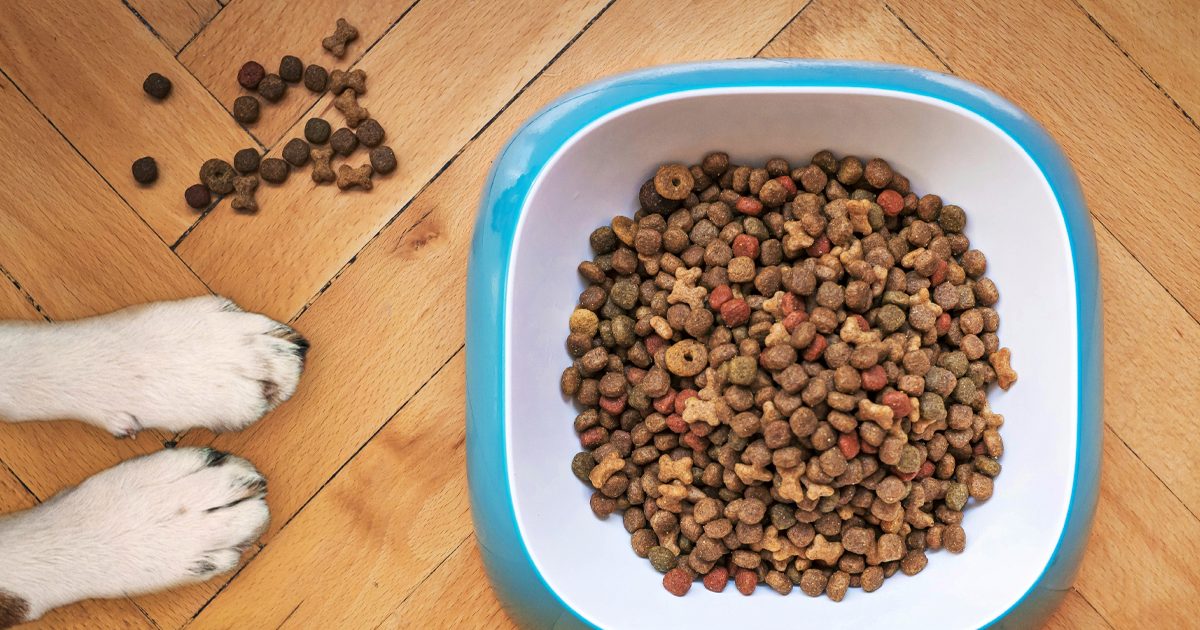
Photo: Mathew Coulton
Your pets’ diet can drastically change their lives, impacting their energy levels, appearance, behavior, and even overall health. But how do you know exactly what your fluffy friends need, and what is going to be best for their little bellies? Well, let’s try to understand!

The Importance of Balanced Nutrition for Your Pet
Let’s begin with proteins aka the building material for all living creatures. They are crucial for muscle growth, tissue repair, and maintaining a strong immune system. High-quality animal proteins, such as chicken, beef, and fish, should form the foundation of your pet’s diet. These proteins are rich in essential amino acids, which the body cannot produce on its own and must be obtained through food.
Fats are often misunderstood but are essential for your pet’s health. They are a highly concentrated energy source that supports the healthy look of pets’ skin and coats, playing a vital role in brain function. Look for dietary sources like fish oil and chicken fat, which are rich in omega-3 and omega-6 fatty acids. These essential fatty acids can help reduce inflammation, improve heart health, and support cognitive function.
Carbohydrates serve as a primary source of energy for your pet. Opt for complex carbohydrates like brown rice, sweet potatoes, and whole grains, which provide sustained energy and fiber for digestive health. Avoid processed grains and sugary treats, as they can contribute to weight gain and other health problems.
Wet Food, Dry Food, or a Mix?
One of pet owners’ most common questions is whether to feed their pets dry food, wet food, or a combination of both. And it is one of the most vital and debatable questions among enthusiasts, vets, and nutrition specialists. Of course, each type of pet food has its own pros and cons.
Kibble is the go-to for many pet owners because it’s convenient, affordable, and has a long shelf life. It also helps clean teeth by reducing plaque and tartar buildup. However, some dry foods can be high in carbohydrates, which isn’t ideal for pets with weight issues, and it’s generally lower in moisture, which can be a drawback for animals like cats, who often don’t drink enough water.
Wet food tends to be more palatable and contains higher moisture content, which can help keep pets hydrated, especially cats. It is also a wise choice when it comes to pets’ dental health: older animals often have difficulties chewing hard kibble, but not we food. However, it can be more expensive, and once opened, it needs to be consumed quickly or stored properly to avoid spoilage.
Many pet owners choose a combination of the two, providing the benefits of both. For instance, you might offer kibble for its dental benefits during the day and supplement it with a small portion of wet food to ensure hydration and variety.

The Role of Treats in Pet’s Diet
Yak Chews are another type made of natural ingredients to ensure that your pet receives vitamins, minerals, and antioxidants that support their immune system, skin, coat, and energy levels.
Use treats wisely, and try adding them to mental enrichment activities like puzzle feeders to engage your pet’s mind while managing their weight.
Tailoring Your Pet’s Diet to Their Life Stage
Pets, like people, have changing nutritional needs throughout their lives. When choosing a diet, make sure it’s appropriate for your pet’s life stage.
These young pets need more calories, proteins, and fats to fuel their rapid growth. You should look for food labeled specifically for puppies or kittens, as it will have the right blend of nutrients for their developing bodies.
Once your pet reaches adulthood, it’s time to switch to a maintenance diet that supports a stable weight and overall health. Grown-ups generally need a less caloric diet, but their diet still has to be highly saturated with proteins and healthy fats.
Know and Understand the Food Labels
Pet food labels can sometimes be confusing, but they are essential in making informed decisions about your pet’s nutrition. Always check for the AAFCO (Association of American Feed Control Officials) statement on the label. This ensures the food meets minimum standards for a balanced diet. Some of other key things to look out for include:
- Named protein source: The first ingredient should always be specific meat, like “chicken” or “salmon,” rather than vague terms like “meat meal” or “animal by-products.”
- Fillers: Corn, soy, and wheat are often used as inexpensive fillers in pet food, providing little nutritional value. Instead, opt for foods with whole ingredients like sweet potatoes, brown rice, or peas.
- Artificial additives: It is always best to stay away from food with added artificial flavors, colors, and preservatives. Rather, go for foods with natural preservatives like vitamin E (tocopherols).
Special Diets for Specific Needs
For example, pets with allergies may need grain-free or limited-ingredient diets. On the other hand, pets prone to urinary issues, especially cats, might benefit from wet foods that increase hydration and have specific formulas to promote urinary health.
Fresh Food Options for Pets
Fresh food is a great option to introduce variety into the diet as it offers numerous benefits for animals. Unlike processed kibble and canned food, fresh veggies and grain contain whole, unprocessed components, ensuring optimal nutrient absorption. This can lead to improved coat health, increased energy levels, and better overall well-being. Additionally, fresh food often helps to address allergies and digestive issues, providing a healthier alternative for pets with sensitivities.
Wrapping up…
Choosing the best diet for your pet is an act of love that requires thought, research, and consultation with your vet to ensure that your pet is getting the nutrition they need to live a long, healthy, and happy life. With the right nutrition, you will be giving your pet the best foundation to thrive. So, feed your companion with care, and they’ll thank you with their loyalty, love, and boundless energy.
